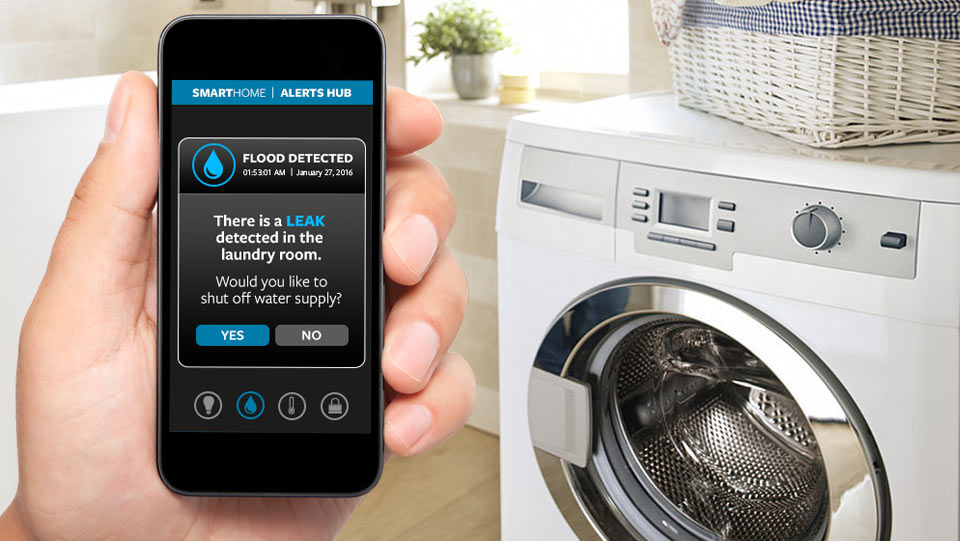Basic Home Maintenance Tips to Help Protect Against Water Damage


If you’re a homeowner, you may be surprised to learn that the bulk of water damage to a home isn’t due to natural disasters or flooding. It’s actually due to unchecked plumbing issues that lurk on the property – things like slow leaks, corroded pipes and degraded valves and supply lines. Even your water makeup can be a culprit.
Fortunately, many of these issues are preventable with some basic, proactive home maintenance.
Do you want to reduce the chances of water damage in your house? Here are some home maintenance tips that Travelers risk control specialists recommend:
1. Locate your main water shutoff valve and learn how to turn it on and off
Knowing how to turn off your main water valve is critical in the event of a burst pipe or other water emergency. In many homes, the valve is located on an exterior wall of the home, in the garage or in the basement. If you have a public water supply, the main water valve is typically on the street side of your home. For homeowners who have wells, the main water valve will most likely be located on the same side of the house as your well. Typically, to turn off the main water valve, you simply turn the valve handle clockwise until it stops. Closing the valve should shut off all water supply into your home in the event of a leak or if a repair is needed.
2. Have your plumbing systems professionally inspected
If you’re unfamiliar with your plumbing system or have concerns about it, have a licensed plumber inspect it for any issues (or signs of impending ones). One good tip is to ask the plumber to tag your main water valve – as well as any other important plumbing valves – for example, with a red flag or piece of tape. This can help you locate them more quickly in an emergency.
3. Visually inspect your pipes regularly
You don’t have to be a professional plumber to recognize potential problems with your pipes. It’s a good idea to regularly walk through your home to take a closer look at any exposed pipes, fittings, valves and supply lines you can see.
You’ll want to look for signs of damage. These can include things like:
- Discoloration on metal pipes (blue, green, yellow or white, usually)
- Cracking or crimping of plastic, PEX or polymer parts
- Deposits or rust-like buildup
- Frayed metal on braided supply hoses, as well as discoloration
- If you spot any of these issues, consider having a licensed plumber proactively replace the part. If left unchecked, they could lead to bigger (and more expensive) problems down the line.
4. Watch for evidence of slow or weeping leaks
Not all leaks are obvious. In fact, slow leaks can be some of the most insidious, as they’re often very difficult to spot before a larger problem occurs. Routinely check your appliances, such as your washing machine, dishwasher or even fixtures, and the area around your appliances for signs of leaks.
Look in cabinets and areas that have pipes connecting to appliances or fixtures (under the kitchen sink, for example) for telltale signs. Is there discoloration or damage on the wood below a pipe or fitting? Is the paint peeling? These environmental signs could point to a slow leak.
5. Tag or label any items you replace or repair
If you do end up having a licensed plumber replace a part or make a repair, be sure to label the item with the date it was replaced or repaired and keep records of the work done. Plumbing fixtures have a set lifespan and knowing when you last replaced or repaired a part can help you plan ahead for a maintenance check of that fixture.
6. Have your water tested
The chemical makeup of your water can lead to corrosion. Mineral content, pH and chlorides are examples of water characteristics that should be measured and controlled to prevent issues with your plumbing system. This is especially important if you own a well. Consider having your water tested and treated, if necessary, by a certified professional to help guard against an often-overlooked threat to your home’s plumbing.
7. Inspect and replace toilet supply lines and valves proactively
Just as you inspect your exposed pipes, you should also check your toilet supply lines and valves regularly. Make sure the supply hoses going to and from your toilets are in good condition and consider replacing them if they have signs of wear and tear or are more than a few years old. Read the installation instructions carefully and do not overtighten connections. Many of these products are installed hand-tight only, which means don’t use a wrench. You should also open your toilet tank and evaluate the flushing valve for signs of degradation, including crazing, cracking or discoloration of plastic components.
More ways to protect your home
Technology has made water loss prevention easier than ever. There are now “smart” water leak detectors and sensors you can install near or around your appliances and connection points that can alert users of leaks in their earliest stages.
These water leak detectors come in both DIY and professionally installed options, so there’s likely something for every budget and capability.
Finally, having the right amount of homeowners insurance coverage is also an important step toward protecting yourself from the potentially devastating costs of water damage. If you are not sure if your home and belongings are covered in the event of non-weather water damage, reach out to your local independent agent or Travelers representative today. Travelers is here to help.



